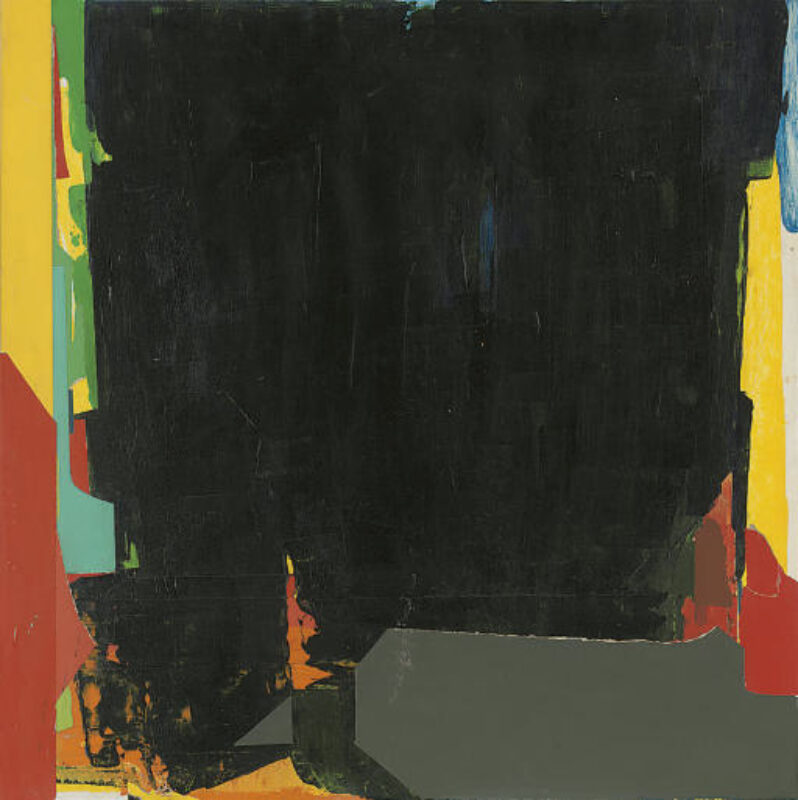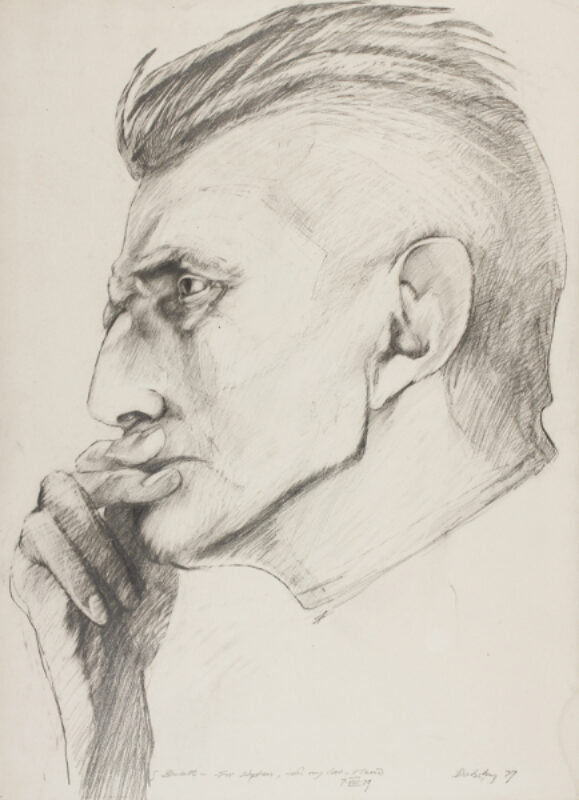Mario Dubsky
1939–1985
Mario Dubsky was a painter and poet, conceived in Vienna and born in London on 14 May 1939. He was one of two sons, non-identical twins, whose parents were refugees from Austria. His parents, who later had a daughter, were Christians of Jewish origin who spoke German at home when he was young; they made belts and decorative flowers from leather. He failed the 11-plus examination twice, and was educated at a progressive school, Burgess Hill. Passionately interested in art from childhood, in 1955 he hitch-hiked to Vallauris, where he waited for two weeks in the hope of seeing Picasso. He travelled during the summer of 1956 to Greece, Rome, and Venice, before attending the Slade School of Fine Art, 1956–60. At the Slade he was influenced by Dorothy Mead, a founder member of the Borough Group with David Bomberg, who was at that time a mature student along with Dennis Creffield, another member of the same group. Dubsky made vigorous charcoal drawings and used paint thickly at this period. He was a postgraduate student at the Slade in 1960–61, and in 1963 won an Abbey major scholarship for two years in Rome. He travelled there via Amsterdam and Berlin, where he encountered the homosexual scene, and also visited Prague and Vienna, where he met relations who had survived the Nazi period. In 1964 he travelled through Serbia, Macedonia, and Turkey to Jerusalem and during that time came to terms with his homosexuality, although he had had relationships with women. He was later to be awarded a Harkness fellowship in painting to work in New York, 1969–71.
He had already, as a student, participated in the British Art Exhibition in Moscow (1959) and, when in Rome, in ‘Ospiti di Roma’ at the Galleria Feltrinelli (1969). His work was also included in the contemporary British art exhibition at the Palazzo Strozzi in Florence in 1968. In 1969 he had his first solo exhibition at the Grosvenor Gallery, showing brightly coloured highly abstracted paintings, and in 1971 exhibited ‘Works on Paper’ at the Penthouse Gallery of the Museum of Modern Art, New York. Friendship with Keith Vaughan contributed to his use of flatter areas of paint and brighter colours, as in Allegro negro (1967/8). The relatively brief period of brilliant colour in his work, exemplified by Shades of 1970 (nearly abstract, with hard edges to flat passages of paint), gave way to a darker palette and to denser textures in the mid-1970s. Dark-toned and jewelled passages appeared to be trapped in fields or curtains of black: Firebrand and City Nights were large (7 foot) paintings of 1973.
During the 1970s it seemed to critics that he was faltering as he introduced a wide range of imagery into some of his pictures, which became dedicated to social and political causes. Through his friendship with John Button, he had been commissioned in 1971 to create a 40 by 8 foot mural for The Firehouse, the New York SoHo headquarters of the Gay Activists Alliance; here he employed photomontage, stencilled words, and slogans. The Trial of 1974 represented three archetypal heads and threatening axes, while Handshake over Europe (1975) introduced floating, almost surrealist figures and bone-like forms. The 18 foot triptych on the theme of time and human development (he had been making many drawing studies in the Natural History Museum), when shown in the ‘British Painting, 1957–77’ exhibition at the Royal Academy in 1977, received a hostile press. He was artist in residence at the British School in Rome in 1982.
A fiery and ebullient man, Dubsky lived at a very intense pitch, and engaged in many conflicts in his personal life; he read widely in philosophy and anthropology, and in 1981 published a book of drawings, Tom Pilgrim's Progress among the Consequences of Christianity, reproducing the often tortured poses of a favourite model, Tom Dawson. His last exhibition at the South London Art Gallery in 1984 included Caberet Valhalla (oil on canvas, 1983), a characteristically menacing, figurative painting, which is now in the Tate collection. He felt confident of that recent work, saying ‘at last I am doing the painting I had dreamed of doing when I was 15’ (Mario Dubsky, 3). Some of his expressive poems were published in his statement entitled ‘X factor’, for that exhibition. He was a dark, handsome man of medium-small build who usually had a close-cropped beard, emphasizing the strong bone structure of his face. He lived alone for most of his adult life, in New York or at the Archway in London. He died of an AIDS-related illness in the Middlesex Hospital on 24 August 1985 and was buried in Highgate cemetery.
This tribute page was created by Visual AIDS.



























